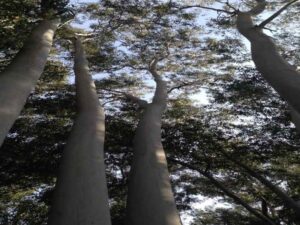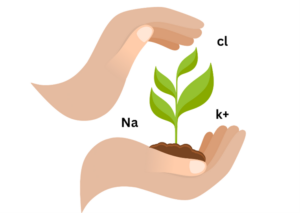In the realm of agricultural research, the demand for more efficient and accurate methods to study plant traits and responses has led to the emergence of high throughput plant phenotyping. This cutting-edge approach combines advanced technologies, data analytics, and plant biology to accelerate our understanding of plant growth, development, and responses to environmental factors. High throughput plant phenotyping revolutionizes the way we approach crop improvement, sustainable agriculture, and food security.
What is high-throughput phenotyping, and how does it differ from traditional phenotyping methods?
High-throughput phenotyping refers to the automated, scalable assessment of plant traits, such as growth, transpiration, biomass, and photosynthetic efficiency, using advanced sensor systems and analytical platforms. Unlike traditional phenotyping, which often relies on manual measurements and subjective observation, HTP offers objective, continuous, and data-rich monitoring, allowing researchers to evaluate hundreds of plants simultaneously with minimal human intervention.
Understanding Plant Phenotyping
Phenotyping involves the quantitative measurement of plant characteristics or traits. These traits encompass a wide range of features, including transpiration, stomata conductance, root influx, biomass vigor, disease resistance, and stress tolerance.
Traditional methods of phenotyping involve manual measurements, which are labor-intensive, time-consuming, and often lack the required precision for detailed analyses. High throughput plant phenotyping aims to overcome these limitations by automating the process and integrating various technologies.
What are the key technologies used in high-throughput phenotyping?
High-throughput phenotyping integrates several advanced technologies to capture plant physiological and morphological data. Each method has its own advantages and disadvantages. These methods include:
- Sensor-based systems (e.g., load cells, chlorophyll fluorescence sensors, and infrared thermography) to monitor physiological parameters like transpiration and water-use efficiency.
- Imaging systems (e.g., RGB, hyperspectral, thermal, and 3D cameras) to evaluate morphological changes and stress indicators.
- Automated data acquisition platforms such as Plant-Ditech’s PlantArray, which combine precise irrigation control, real-time data logging, and cloud-based analytics.
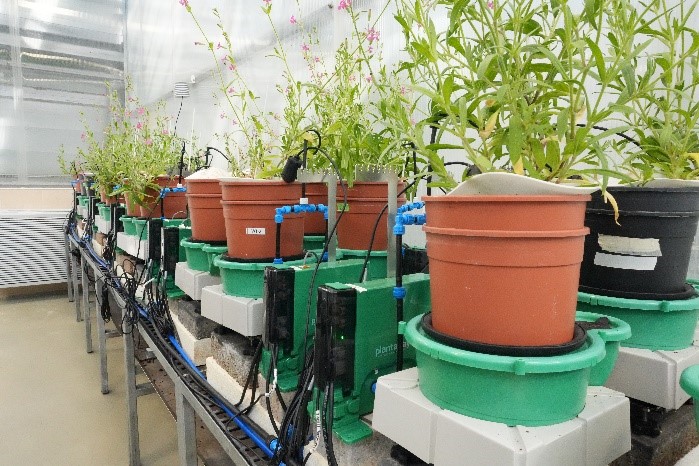
Integrating artificial intelligence and machine learning into phenotyping for analysing large datasets, identifying patterns, and predicting plant performance is a necessary step to continue to be at the forefront of progress.
How can high-throughput phenotyping accelerate plant breeding programs?
Breeding programs traditionally take many seasons to select ideal genotypes, often relying on visible traits that appear late in development. High-throughput phenotyping systems such as the PlantArray accelerate this process by identifying subtle physiological responses early in the plant’s lifecycle. This allows researchers to:
- Rapidly screen large populations under controlled or field-like conditions.
- Identify genotypes with favorable traits such as drought tolerance, nutrient efficiency, or high yield.
- Accelerate discoveries by making informed decisions based on real-time data, shortening and refining experimentation.
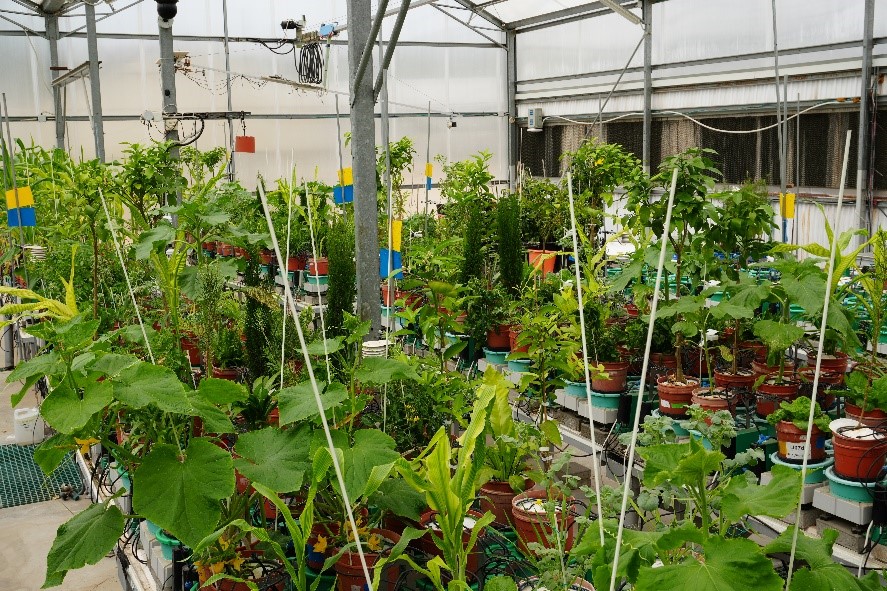
By leveraging real-time physiological data, researchers can make informed decisions that significantly shorten and refine the experimentation process. This accelerates the pace of discovery, reducing trial-and-error cycles and optimizing resource use. The PlantArray system exemplifies this approach by providing continuous, high-resolution measurements of plant water relations and growth dynamics.
What are the potential challenges or limitations of implementing high-throughput phenotyping?
- High initial cost of equipment and infrastructure, for example photographic systems often require an expensive and very complex electric conveyor to operate.
- Those systems often consist of a lot of data. Sometimes data management and bioinformatics capabilities are required.
However, platforms like PlantArray are helping to overcome these barriers by offering user-friendly, scalable solutions. PlantArray is a physiological phenotyping gravimetric platform that enables fast and comparative screening of all plants in the array. It automatically measures and analyzes plant responses to various environmental stresses, providing high-resolution data that supports more efficient and accurate decision-making in plant research.
How does high-throughput phenotyping improve data accuracy in plant research?
High-throughput phenotyping systems improve data accuracy by reducing human error and capturing plant responses continuously and in real time. The integration of multiple sensors provides a holistic view of plant behavior, minimizing variability associated with manual or point-in-time measurements. PlantArray, for example, records weight-based transpiration rates every few minutes, revealing subtle differences in water-use efficiency that traditional methods might overlook.
What types of plants can benefit most from high-throughput phenotyping?
While high-throughput phenotyping is applicable across a wide range of plant species, most researchers use it for
- Crops under abiotic stress (e.g., drought, salinity, heat)
- Genetic experiments to identify specific genes or the most adapted strain
- Ability to examine a wide range of plants, for example, model plants such as Arabidopsis to major crops such as wheat, corn, tomato, citrus and potatoes.
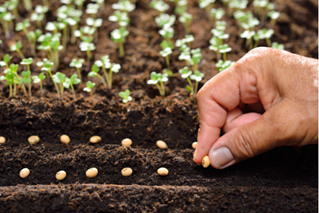
How can researchers integrate high-throughput phenotyping data with other types of plant analysis?
Integrating physiological data with other data streams enhances the depth and precision of plant research. Genomic data, such as GWAS and QTL mapping, enables the linking of phenotypes to genotypes, while metabolomic and transcriptomic studies support a systems biology approach to understanding plant function. Incorporating soil and environmental data further allows for robust modeling of plant-environment interactions. To facilitate this integration, The PlantArray platform supports open data formats and API-based connectivity, making it easier for researchers to align high-resolution physiological measurements with molecular or environmental datasets.
What are some successful case studies or examples of high-throughput phenotyping?
The PlantArray system has been used and has been a central component in experiments around the world in over 60 articles. For the full list
For example, in the scientific article Precision phenotyping of a barley diversity set reveals distinct drought response strategies (Paul, M., et. al. (2024)
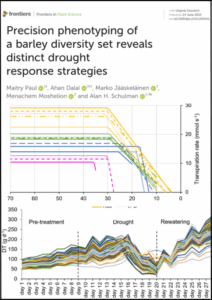
researchers used the PlantArray gravimetric platform to analyze drought responses in 81 European barley genotypes. The system provided continuous, high-resolution data on transpiration, biomass, and water use, allowing the team to identify not just classic isohydric and anisohydric types, but also a novel “dynamic” strategy—plants that shift behavior based on water availability.
The PlantArray system was essential for:
- Real-time monitoring of whole-plant water relations,
- Automating drought stress control,
- Enabling high-throughput, precise phenotyping across diverse genotypes.
This study highlights PlantArray’s power in uncovering complex drought-response traits, critical for developing climate-resilient crops.
What is the cost of establishing a high-throughput phenotyping platform?
Costs vary, of course, with system type, scale, components, and level of automation. A small-scale modular system like PlantArray can be set up for a relatively modest investment compared to other systems and expanded over time. While initial costs can be significant, the return on investment is high for institutions seeking accurate, reproducible, and efficient phenotyping.
Applications and Implications
- Crop Improvement: Understanding plant traits and their genetic basis is crucial for developing improved crop varieties. Phenotyping allows researchers to identify genes responsible for traits like yield, drought tolerance, and disease resistance. This knowledge can expedite breeding programs and lead to the development of more resilient and productive crops.
- Precision Agriculture: High throughput phenotyping facilitates precision agriculture by enabling targeted interventions based on the real-time data collected from fields. Farmers can irrigate and fertilize more efficacy for optimizing yield production.
- Resilience: As climate change poses challenges to agriculture, high throughput phenotyping can aid in developing crops that are resilient to changing environmental conditions. By studying plant responses to heat, drought, and other stressors, researchers can design strategies to mitigate the impact of climate change on global food production.
- Sustainable Agriculture: With a growing global population, sustainable agriculture practices are essential. High throughput phenotyping allows for the development of crops that require fewer resources, such as water and fertilizers, contributing to more sustainable farming practices.
Data Integration and Computational Power Challenges:
Data Integration Complexity: High throughput plant phenotyping generates data from diverse sources, including remote sensing, imaging, sensor networks, and robotics. Integrating and harmonizing data from these varied platforms can be intricate, requiring meticulous attention to data formats, metadata, and synchronization. Establishing standardized data formats and robust management systems is crucial to ensure seamless data integration and meaningful cross-platform analysis.
Computational Power Demand: The volume and complexity of data generated in high throughput phenotyping experiments can overwhelm conventional computing resources. Analyzing and deriving insights from large datasets demand substantial computational power. Researchers require access to high-performance computing facilities or cloud-based resources to efficiently process, model, and interpret the extensive phenotyping data. As the scale and complexity of phenotyping data continue to grow, ongoing advancements in computing technology are essential to ensure timely and accurate analyses.
Types of high throughput plant phenotyping technology’s:
Remote Sensing: Drones and satellites equipped with sensors provide detailed data on plant traits across large fields, offering insights into health, stress, and growth patterns. But, the equipment and technology required for remote sensing, such as high-quality drones and satellite imaging systems, can be expensive to acquire and maintain, especially for smaller research projects or resource-limited areas.
Another issue is the data interpretation.
Imaging Techniques: High-resolution imaging, including RGB, multispectral, and hyperspectral methods, uncovers subtle plant trait differences, diseases, and responses to various conditions, enabling plant growth monitoring, but these technologies have several disadvantages. One of those is the complexity, advanced imaging techniques often require specialized equipment and technical knowledge to set up and operate, making them less accessible to researchers without the necessary expertise. Another issue is Time-Consuming. Capturing high-quality images can take time, especially when imaging a large number of plants. This time requirement might limit the frequency of data collection and real-time monitoring. And at least is the cost. Imaging technologies are very expensive and will not fit to small institutes.
Robotics and Automation: Robotics automate data collection by traversing crop rows, capturing images and measurements swiftly and accurately, facilitating data gathering from numerous plants. The upfront costs of designing, building, and deploying robotic systems can be substantial. Customization for different plant species or experimental setups can further increase costs. Another issue is the Initial Investment. The upfront costs of designing, building, and deploying robotic systems can be substantial. Customization for different plant species or experimental setups can further increase costs.
Physiological phenotyping gravimetric platform: At the forefront of science standing the PlantArray system which takes phenotyping to another level. The PlantArray system is an innovative physiological phenotyping gravimetric platform designed to comprehensively monitor and assess various aspects of plant growth, development, and responses to environmental conditions. This advanced system combines the principles of gravimetry, which involves measuring changes in weight, with plant phenotyping to provide detailed insights into plant physiology.
The PlantArray system by Plant Ditech employs physiological phenotyping, which involves the quantitative measurement of physiological traits and processes in plants. This goes beyond traditional visual assessments and allows researchers to precisely quantify characteristics such as transpiration rate, water uptake, and etc. By directly measuring these physiological parameters, the system enables a deeper understanding of how plants interact with their environment and how they respond to different stressors. Gravimetry involves measuring changes in weight over time, which can be directly correlated with water loss, gain, and utilization by plants.
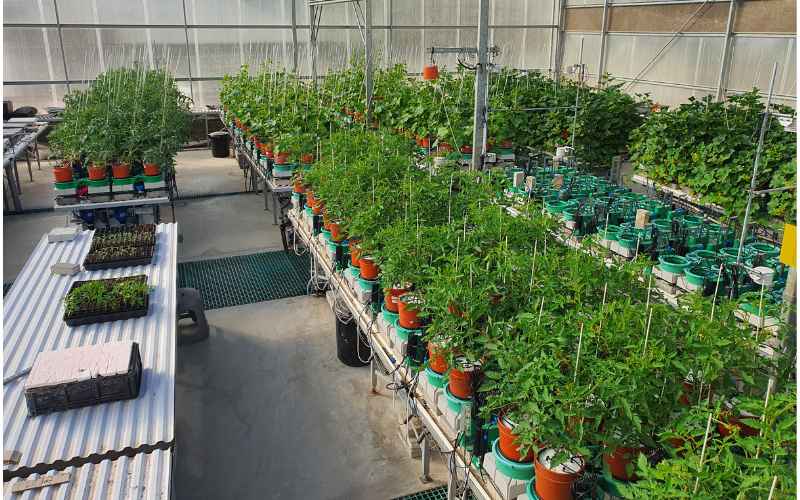
Key Features of the PlantArray
High Throughput: The system is capable of simultaneously monitoring multiple plants or experimental conditions in parallel. This high-throughput capability accelerates data collection and allows for comprehensive studies across various plant genotypes, treatments, or environmental conditions.
Real-time Monitoring: The continuous measurement of plant weight enables real-time monitoring of water uptake, transpiration, and growth. This provides valuable insights into how plants respond to changes in soil, temperature, nutritious, and other environmental factors.
Stress Response Analysis: The gravimetric platform is particularly useful for studying plant responses to stress conditions such as drought, salinity, or nutrient deficiency. Researchers can observe how quickly and how plants react to stressors and how their physiological processes adapt over time
Automation: The system is all automated and managed remotely, with built-in sensors and controls for maintaining environmental conditions within the growth chambers. This ensures consistent and controlled experimental settings. The entire system is automated and managed remotely, with built-in sensors and controls to maintain the factors being tested. This ensures consistent and controlled experimental settings.
Why choosing the PlantArray as your high throughput plant phenotyping?
- Gravimetric Precision: Compared to other systems, the PlantArray’s gravimetric approach provides direct and precise measurements of plant weight changes and water utilization. This accuracy contributes to more reliable data, enabling more accurate conclusions and better-informed decisions.
- Real-time Monitoring: The continuous monitoring capability of the PlantArray offers a significant advantage over systems that rely on periodic measurements. Real-time data capture allows for the observation of dynamic plant responses to environmental changes, leading to more insightful and timely results.
- Quantitative Insights: The PlantArray’s focus on quantitative data generation allows for more accurate and meaningful comparisons. In contrast, some other systems might rely on visual assessments or indirect measurements, leading to potentially less precise results.
- Crop Improvement Potential: The PlantArray’s ability to quantitatively assess plant traits related to water use efficiency, nutrient uptake, and stress responses directly benefits crop improvement efforts. Researchers can identify valuable traits for breeding more resilient and productive crops.




